Danny Yount, Creative Director at Prologue Films, accompanied by Daniel Klohn and Miles Laurisden talks about their work on TRON LEGACY. Prologue is a studio specializing in the design of film credits and motion design. They worked on films such as IRON MAN 2, THE LOSERS or SHERLOCK HOLMES and TV show like THE WALKING DEAD.
How was the collaboration with Joseph Kosinski?
It was a wonderful collaboration. He’s a director with a great design sensibility. He knew I was a fan of the first film and have designed things that referenced it (IRON MAN 1 end credits) so as you could imagine I was very excited to talk about TRON LEGACY with him. We met shortly after we completed the SHERLOCK HOLMES titles and during our last push to finish the hologram VFX for IRON MAN 2.
What did you do on this movie?
We designed the end credits, the Disney castle logo, the memory sequences and the TV news sequence that reported Flynn’s disappearance.
The Disney logo revisited for this movie is very dark and techno. Can you explain how you design it?
We were initially given the task of merely updating the castle to suit the film using the existing logo that flies down from the sky. We went through several ideas to test the water of how much we would be able to push the look of the traditional Disney vibe into a Tron space. I was afraid that if we went too far we would be forever cast out of the Magic Kingdom but I underestimated the bravery of the filmmakers who wanted to arrive at a very Tron-like Castle, which Daniel Klöhn designed.
 |
 |
What indications and references have you received from the director for the main and end titles?
They had very utilitarian view of the end titles – that it was to be type only. I think that knowing what we usually do with end credits, they were a little apprehensive about making something with « too much design », as the film already had plenty of great CG, but once we started pushing a type-only sequence to incorporate more elements and really take advantage of stereoscopic 3D space, they began to warm up to what we brought the table. I think we all understood from the very first CG test that Joseph Kosinski had made to sell the idea of the film that this was something very special and celebratory in terms of design. I liked the very detailed type animations that designer Daniel Klöhn was making and thought it would be good if that somehow it all felt like a graphic representation of the Grid. We also spent a lot of time adding detail to the climax of the sequence – the TRON logo. I added a lot of detail and digital branchings to it to have it feel as though it is the center of the entire piece – as though you are in the core of the Grid. It took several months to incorporate everything but the results turned out great I thought.
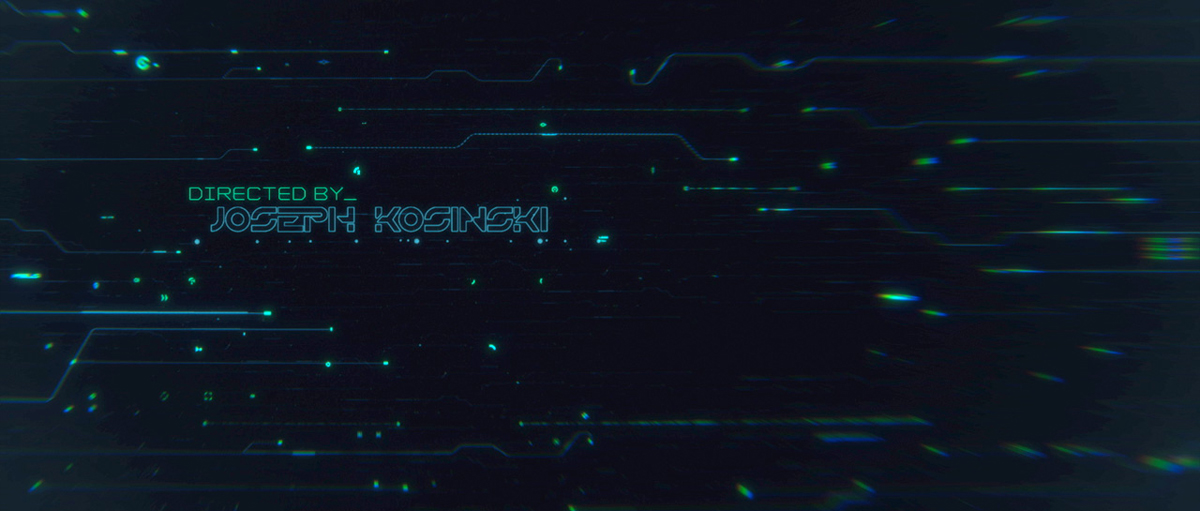 |
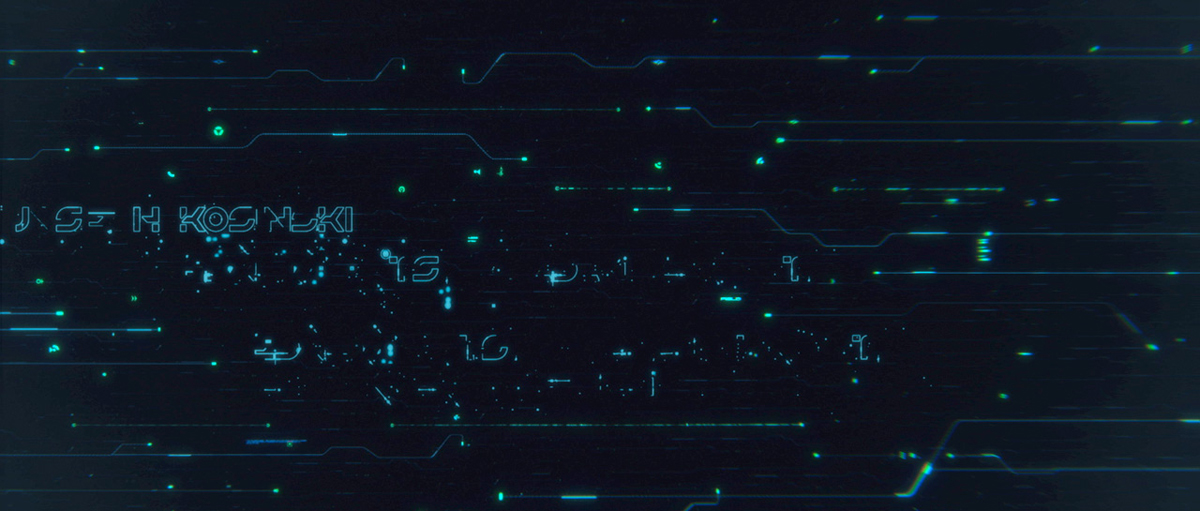 |
How did you create the beautiful opening title where we go from a CG wireframe to a city?
That was made by the director and his team at DD.
What were the challenges to the TVs sequence?
The assignment was to give the viewer a brief retrospect of what had happened to Kevin Flynn since the last film. His idea was to do this using 80’s television sets. That gave us the ability to communicate a barrage of reporting worldwide simultaneously. They had and edit made of storyboard frames they had made. The challenge was to have the news broadcast work without real newscasters, so I thought it might be good to have it feel like a special reporting segment that used in-house promo material from Encom.
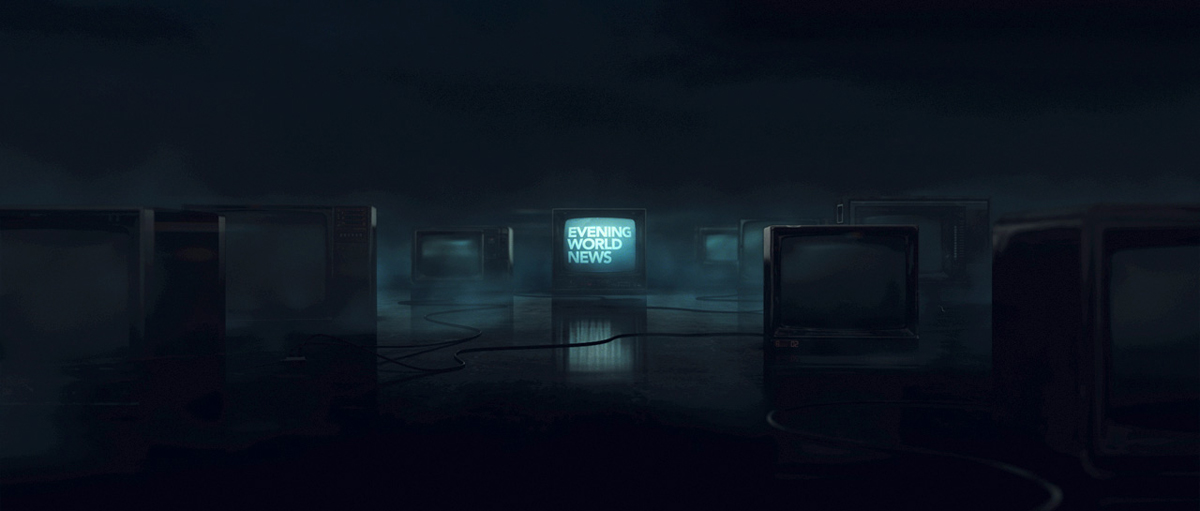 |
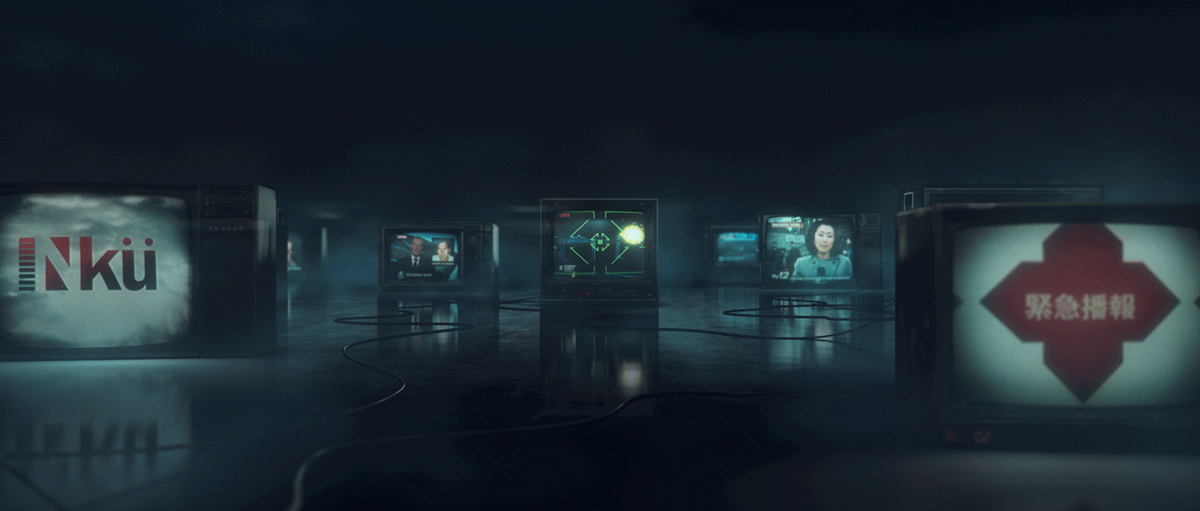 |
The problem was that it still looked too digital and not like real 80’s video, so we turned off all the video plug-in effects we had and decided to shoot everything running on monitors with old video cameras from that time period. Compositor and Technical lead Miles Lauridsen and animator JD Burditt spent many late nights getting the look down using that technique.
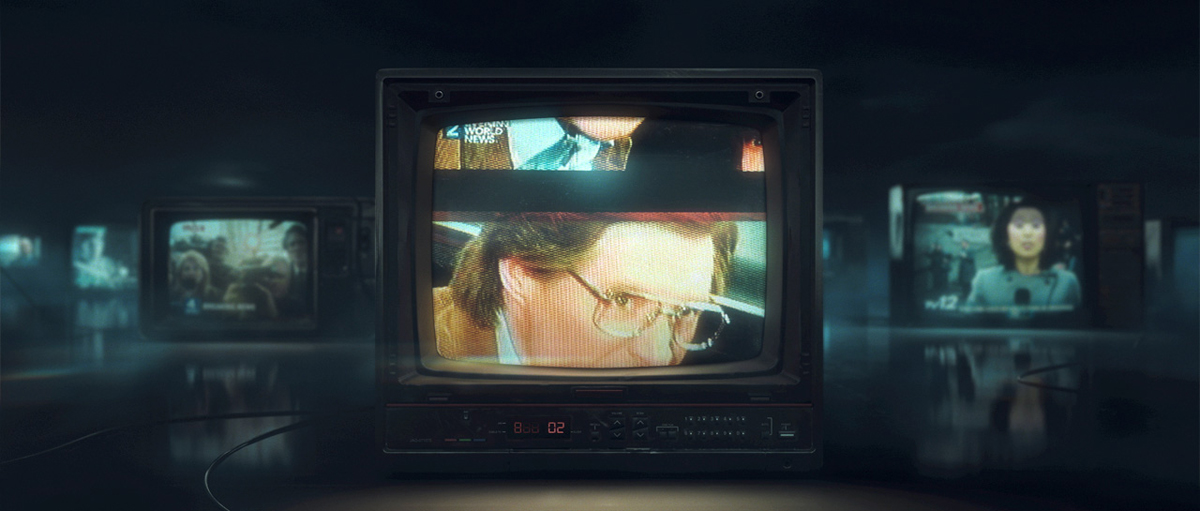 |
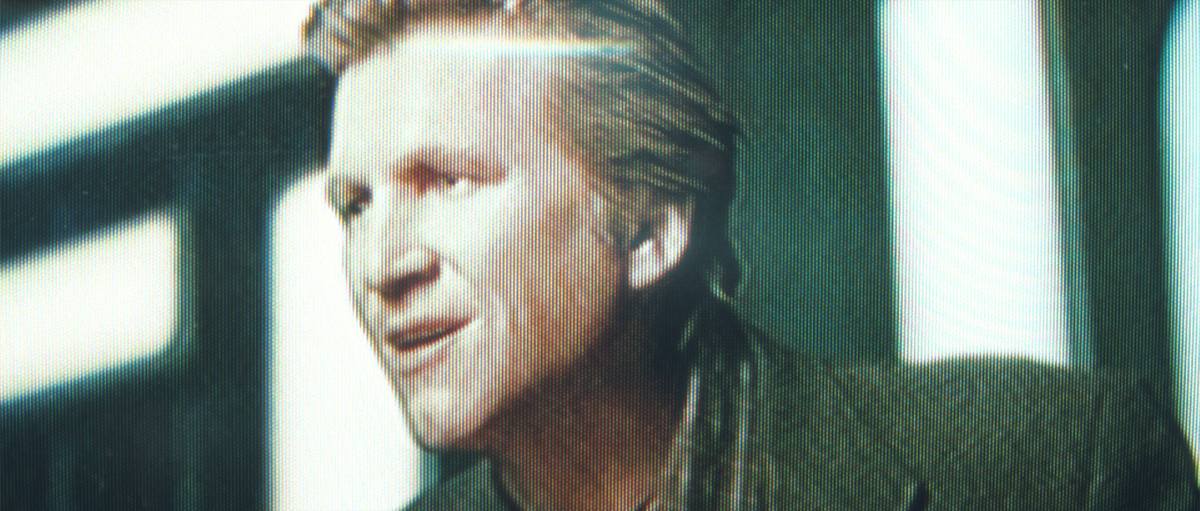 |
How was the collaboration with Eric Barba and the team of Digital Domain?
Terrific – great people with detailed notes on everything. It helps a lot to work with people who know what they want and know what they are doing.
Can you explain the creation of the shot with the ePad from scratch to the final compositing?
It really came to us as a « oh by the way we also need this… ». So I designed something quickly that animator Takayuki Sato did in a very short time. It needed to do was communicate that Encom’s OS was being hijacked virally.
Did you have to show some specific information on the ePad interface?
Yeah – we just needed to communicate in an interesting way that the Encom OS was being downloaded as a bit-torrent.
How did you design the look of the flashback Flynn shots?
We were given sequences and asked to make them look like they were being viewed within a sort of a futuristic monitor. They needed to feel like memories so we distorted the edges a bit and warped the image to give it a curved surface feeling. We developed several looks for this – everything form a retro film look to analog video to digital. What seemed to work best was sort of an analog / digital hybrid so that they felt like archival material. For the fight scene I thought it would be interesting if impacts would cause the video to glitch a little. We also did a lot of work to add camera shake, sparks and flares to the scenes to help amp them up a little. For the final touch compositor / technical lead Miles Lauridsen came up with a nice hex pattern look for the surface of the display.
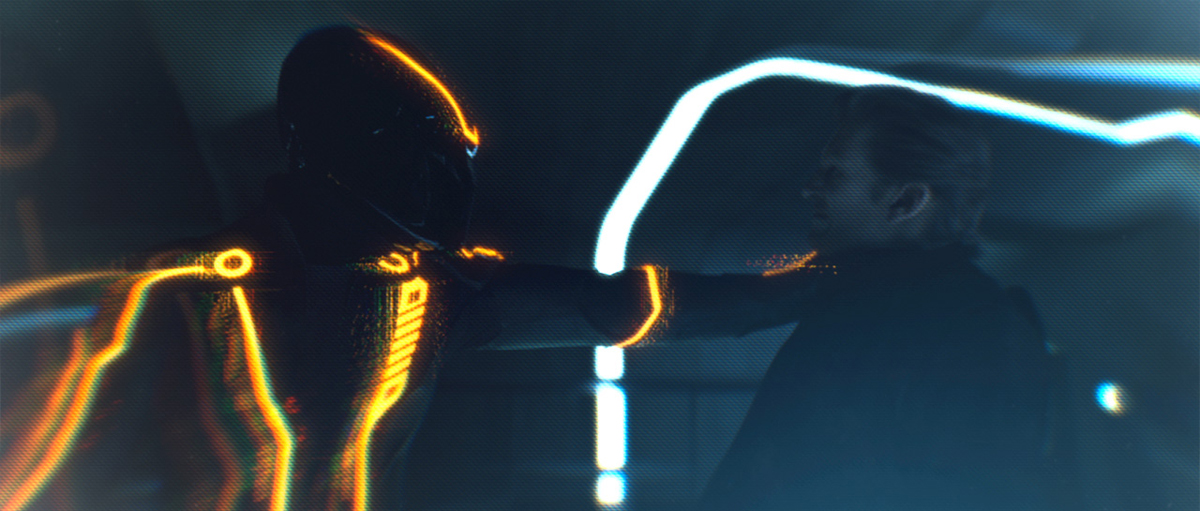 |
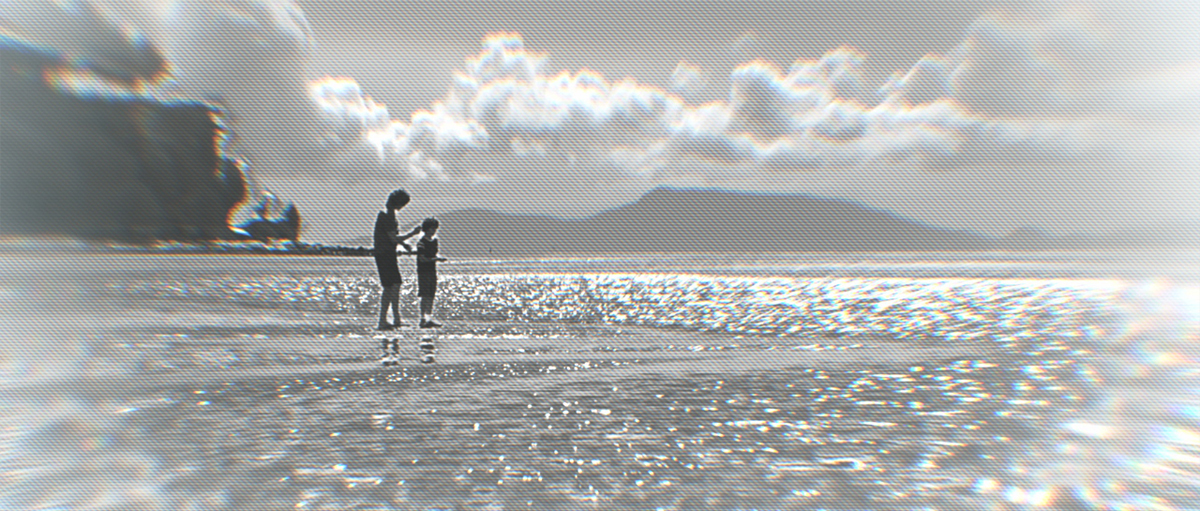 |
Can you expound on any technical tricks or requirements the flashback sequences required?
Miles Lauridsen: The flashback sequence technical brief was to take 2d footage (single view) and convert it into something that felt like viewing a tv set in stereo. After receiving a detailed creative roadmap of the project created by Danny in After Effects, we set about the process of placing footage, lens flares, light reflections and dust textures on geometry in Maya. Footage was mapped to a card at the back of the scene with the additional textures of dirt, dust and glitches placed on various curved planes closer to camera to give the feeling of a space between tv tube and the surface glass. We rendered out stereo views of this and added a distinctive ‘hex’ effect to give the feeling of a refractive or pixelated grid covering the television tube in the final comp.
Here are some concepts below:
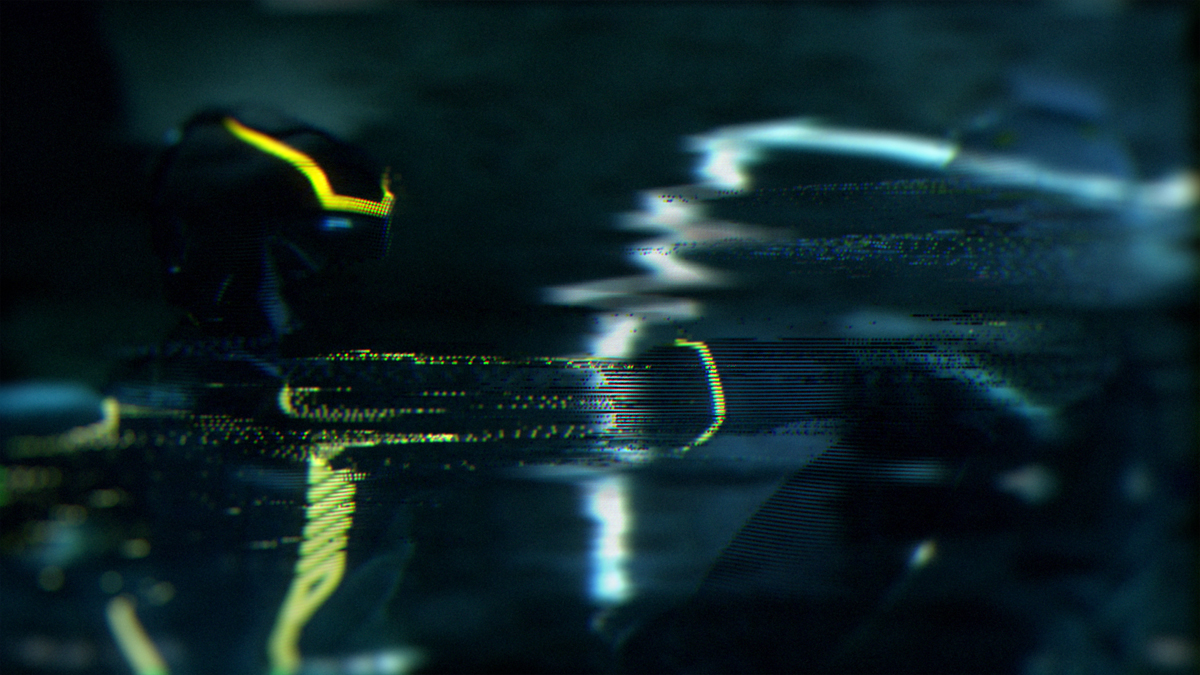 |
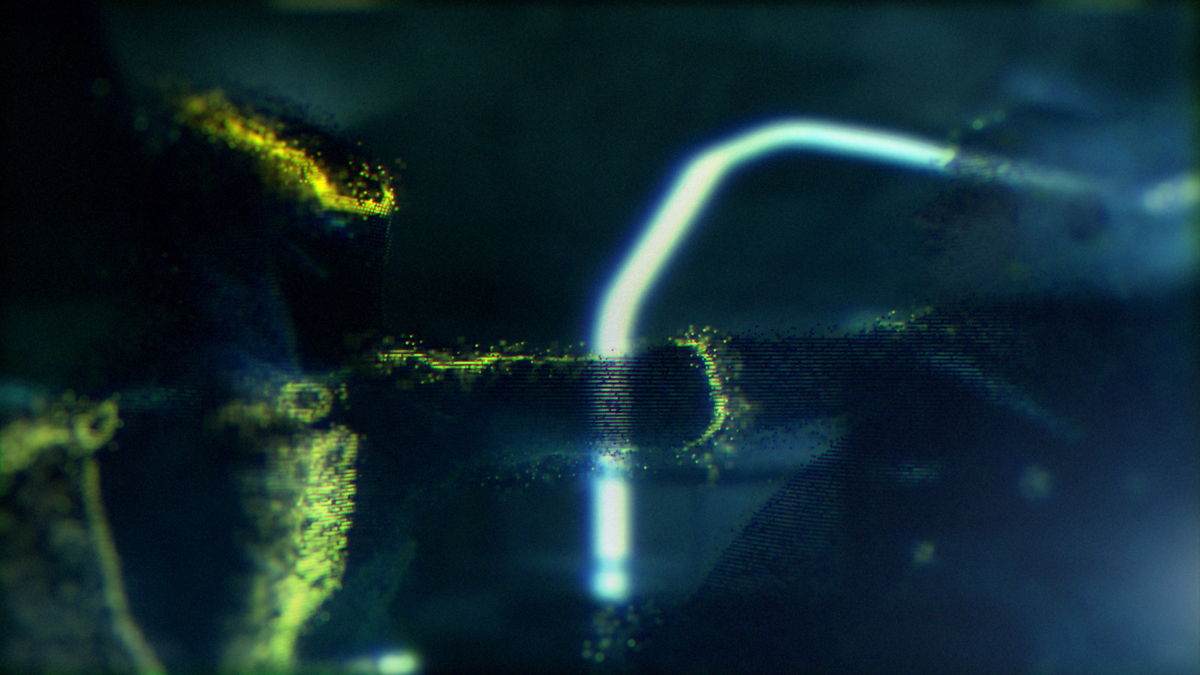 |
Did the stereo aspect caused some problems to you on technical and artistic levels?
Miles Lauridsen: Stereo certainly adds another level or two of complexity and challenge to any project. Technically, you’re dealing with twice as much data and any small change upstream requires a solid workflow to propagate those changes out to all artists and software packages working on a particular shot. Artistically it allowed us to add an extra element of emotion and life into shots that were already effective without being stereoscopic. One of the challenges was making sure that the design and creative dictated the stereo and not the other way around. In this way we were able to use the stereo aspect to focus the eye on certain elements of design and use it as a tool in a similar manner to a filmmaker using depth of field or blocking to tell their story.
What was the biggest challenge on this project?
Miles Lauridsen: The biggest technical challenge was probably sharing and managing stereo camera data between 5 different software packages: Maya, Houdini, C4D, Nuke and After Effects. For the end credit sequence a custom stereo camera rig was built to allow attachment to Daniel’s animated camera in AE, and then data was baked out for Maya and converted to FBX for portions of the main title done in Houdini.
Daniel Klöhn: For the end credit sequence we started working with two cameras. one starting from the beginning, one from the middle and later on we had to move the whole world space to join them together. Another challenge was that the sequence contained over 30,000 of layers in AfterEffects, which brought the software to its ultimate limit, so we had to create several precomps to make the layers work and visible inside the software interface.
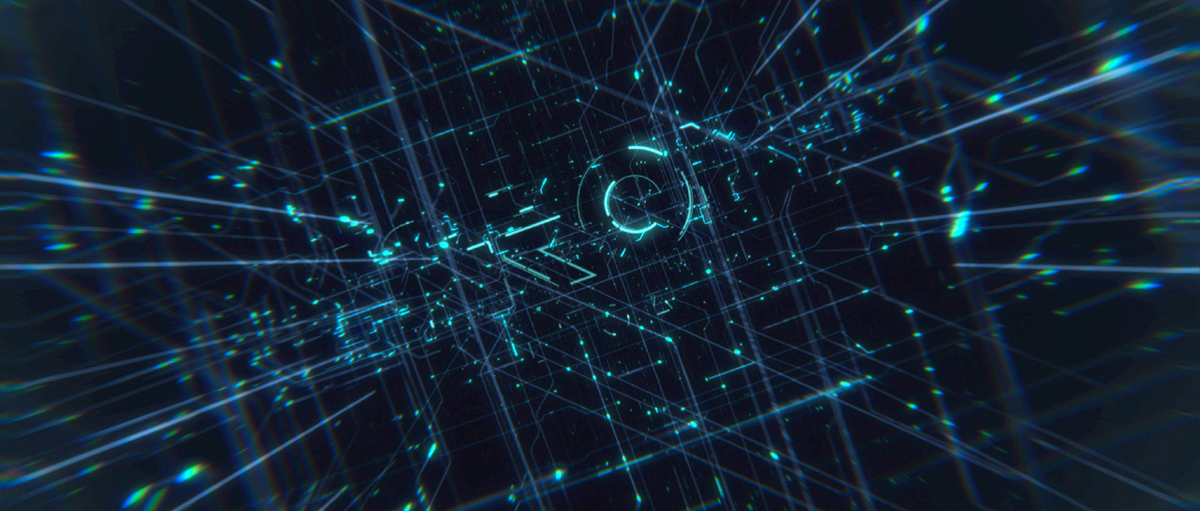 |
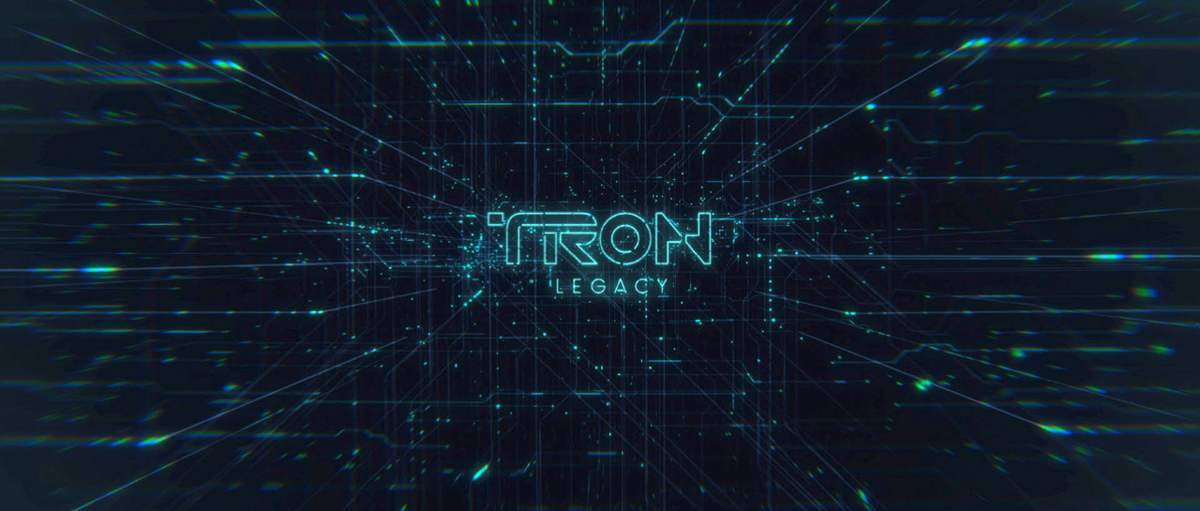 |
Was there a shot or a sequence that prevented you from sleeping?
As with any project there are several, but that is mostly due to our own obsession with detail. The 3D was a challenge for us as this process is still relatively new, but we eventually worked out the kinks as time went on. The main problem really was the amount of data and render times since everything had to be rendered with 2 cameras. All in all though everyone did a tremendous job of delivering on time.
How long have you worked on this show?
Starting with early concepts around 8 months total with most of the work during the last 4 months.
How many shots have you done?
About 14 shots in stereo – 20,000 final frames total. The frames required for the end credits were about 80,000 before final comping.
What did you keep from this experience?
The thing that impressed me the most was how much fun it was and how surprisingly fresh a new translation of an old idea can become. I thought the filmmakers did an amazing job of translating that so we were so happy to be a part of it. And when you have that kind of enthusiasm in a team of great people like we had the excitement just becomes infectious.
What is your next project?
We’re pitching on some things that I’d love to share but can not right now. I can tell you it’s another superhero film though which looks promising so far.
A big thanks for your time.
// WANT TO KNOW MORE ?
– Prologue: TRON LEGACY page on Prologue website.
– fxguide: TRON LEGACY article on fxguide.
© Vincent Frei – The Art of VFX – 2011


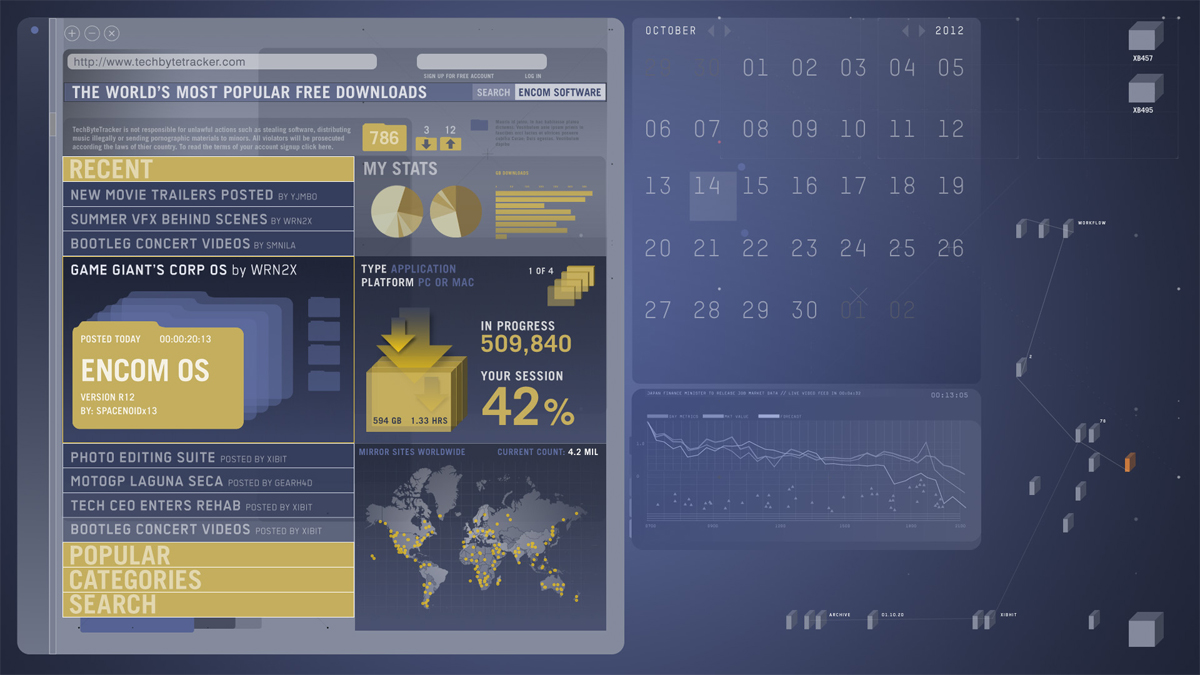

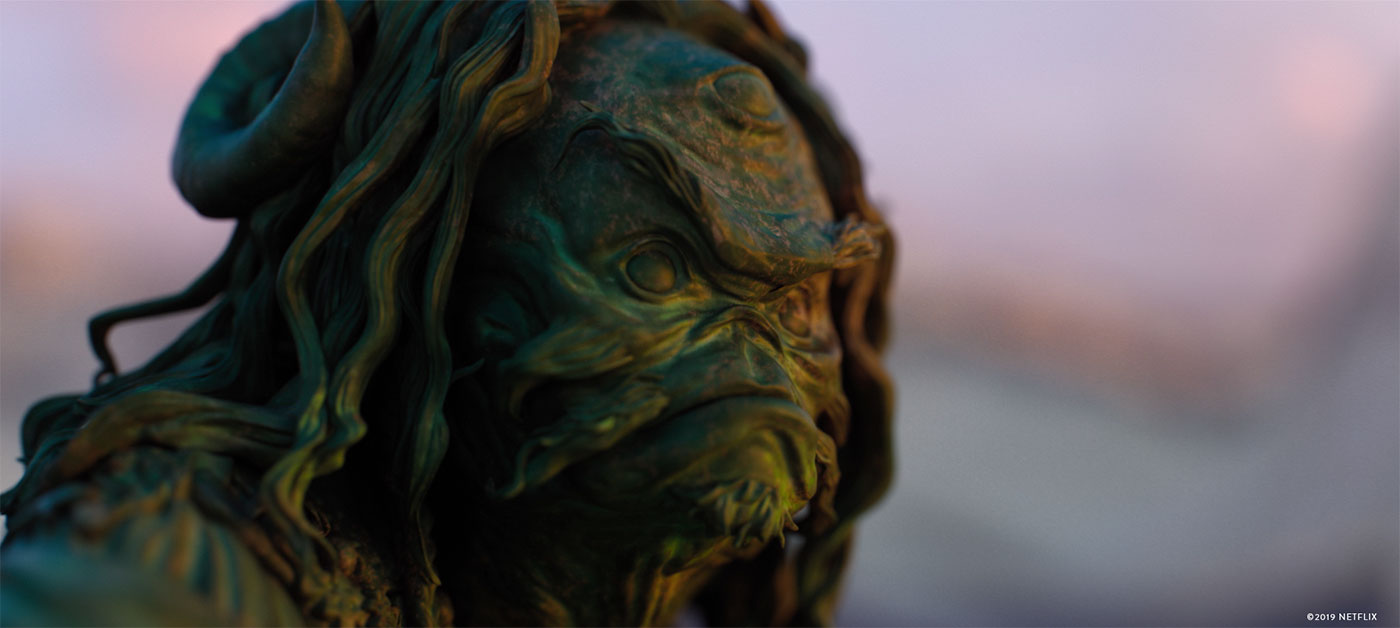
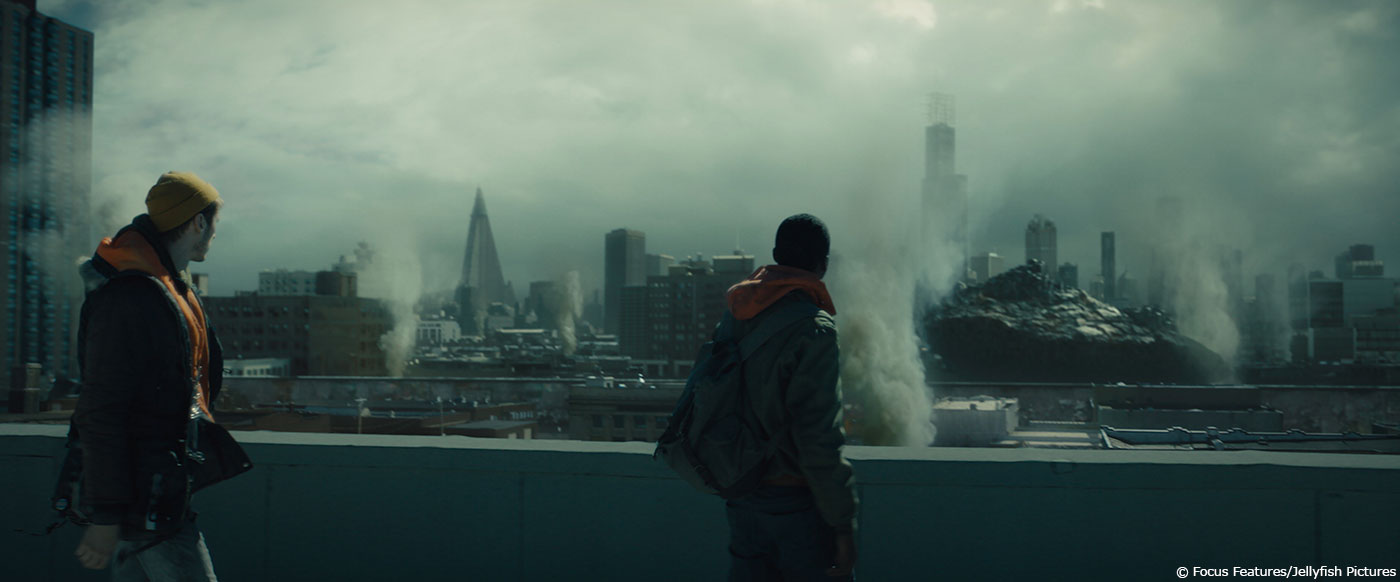
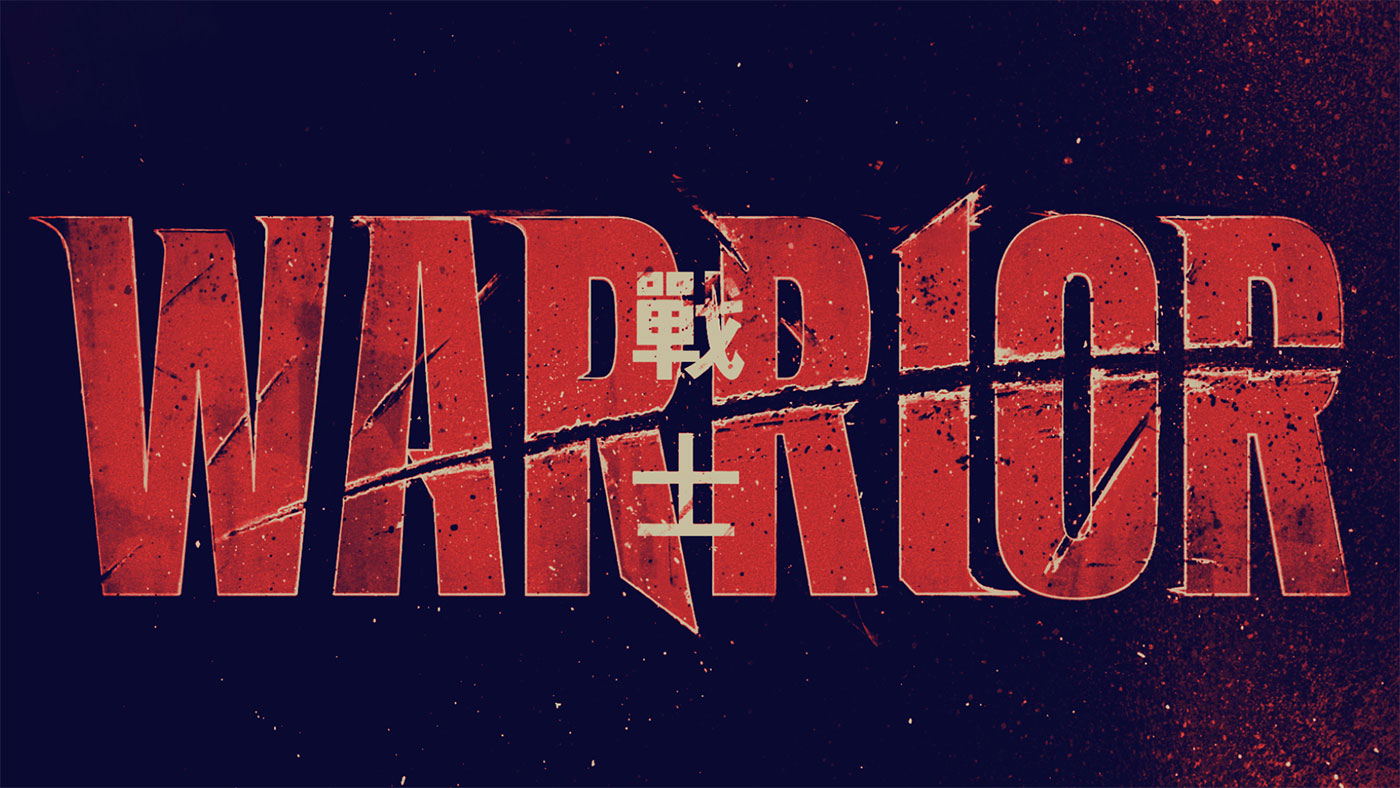
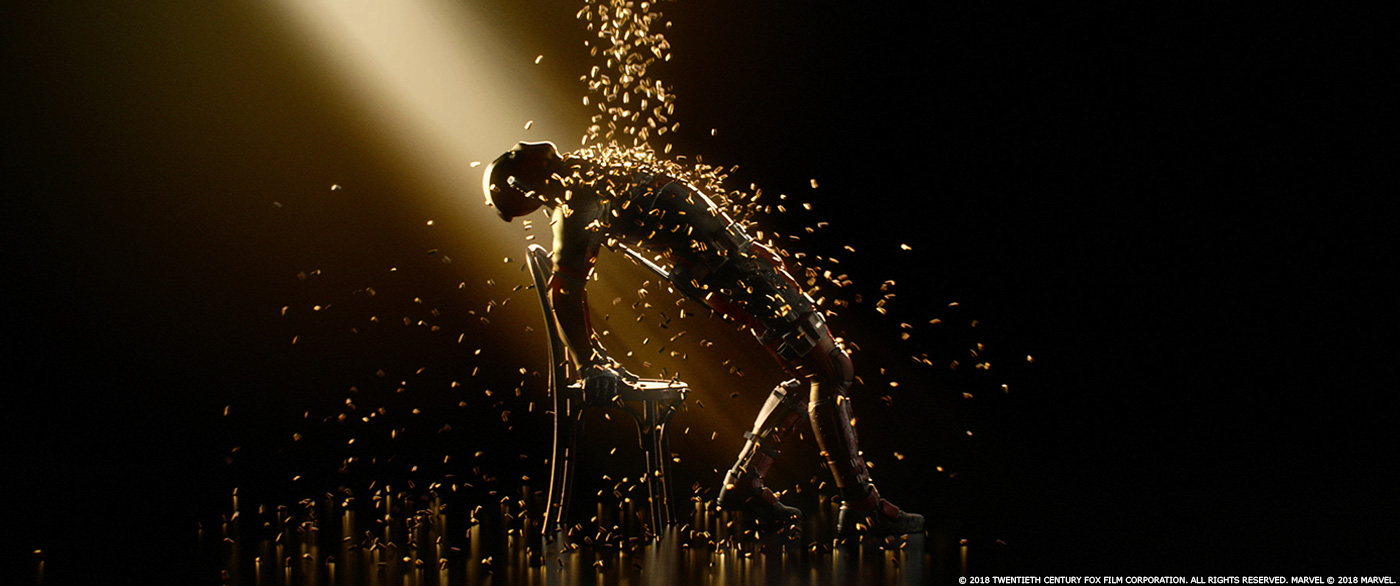
For more information on the UI design for TRON: Legacy, check out my recent interview with GMUNK: http://www.inventinginteractive.com/2011/03/02/interview-gmunk/